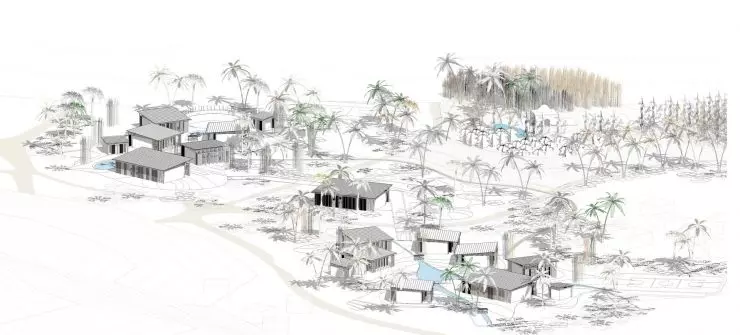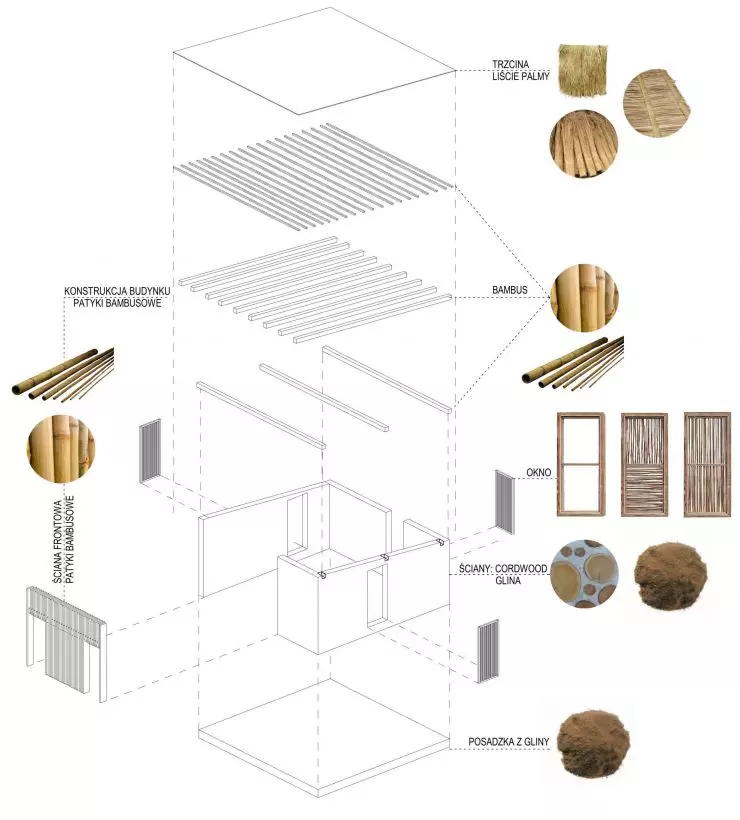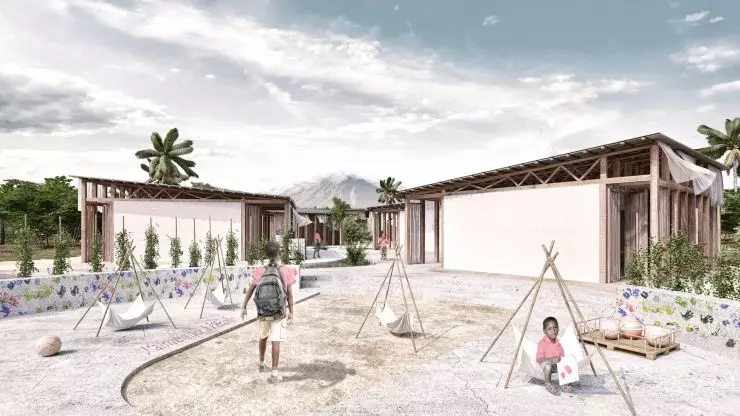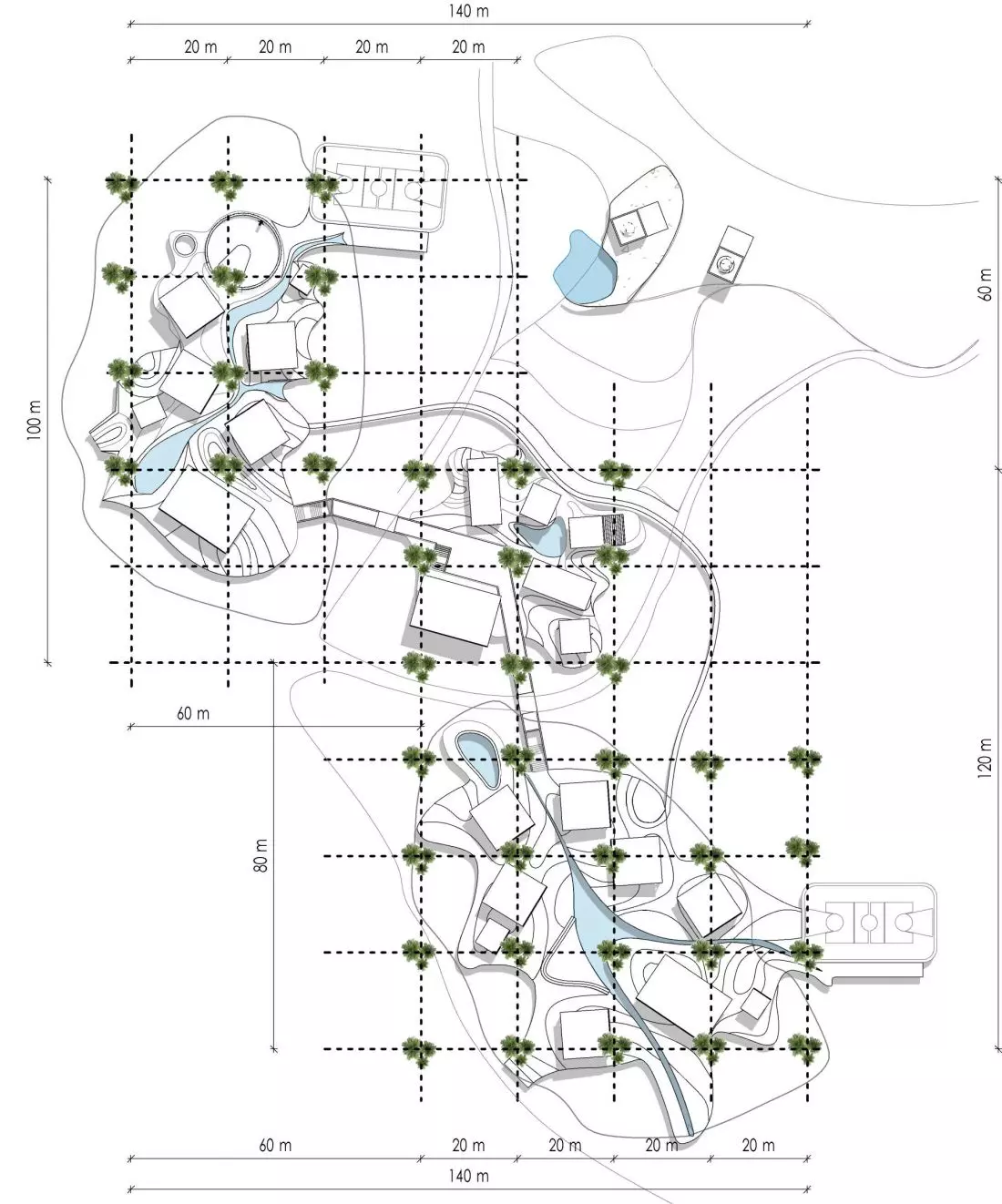Work submitted for the competition
"Best Diploma Architecture"
Communities affected by disasters lose their homes, schools and jobs in an instant. Reconstruction sometimes takes years. In the face of a disaster, properly shaped architecture can become a helpful solution, offering a chance to recover from the crisis. Haiti, among other places, has become a field of experience for architecture faced with disaster. The aforementioned cataclysm largely affected education and the contemporary model of teaching. The purpose of this paper is to present a way of modeling a rural school complex using Haiti as an example.
Left: site plan; right: diagram of a school compound, tree grid
© Agnieszka Chudy
The analyzed topic draws attention to the use of modularity of architectural solutions and simple technologies possible in equatorial climates, but also other disaster-prone areas, in the area of rural schooling. Sustainable design was combined with the quality of architecture and construction, the phased implementation of the project and the assumed low budget. The model of the rural school complex was estimated to the minimum necessary required areas, rooms and spaces. The idea of phasing the premise into four implementation phases gives the possibility of efficient implementation within the framework of the materials obtained and other necessary resources.



visualization
© Agnieszka Chudy
It was assumed that each phase will be independent of the next and will not affect the one already implemented. The first phase includes the construction of elements necessary for the operation of the school: two classrooms, sanitary facilities - toilets and a nursing room. The second phase proposes the construction of more classrooms and a multipurpose room connected to a food preparation and consumption area. The third phase includes landscaping the surroundings and introducing self-sufficient solutions. The fourth proposes the creation of a space for the local community and children, with a focus on producing a local product from its own cultivation.



view of the interior of the school complex
© Agnieszka Chudy
The main idea of the project is to take advantage of the natural surroundings, the availability of materials, local conditions and modular implementation of the procedure for shaping such a development. Existing greenery was used to complement the designed grid of trees, which become a geodetic marker in the field - for the location of buildings, in the context of site conditions and analysis of the migration of the sun. The lowered floor is a place for rainwater collection improving the microclimate.



interior of school complex with carved floor for rainwater collection
© Agnieszka Chudy
Building material (clay) is used here, along with admixtures of other rocks and components, in combination with water and sand, concrete, natural pigments (marl, stoneware, limestone coral, conglomerates of volcanic rocks). The construction of the school complex is characterized by simple and natural materials and those that have been grown through the implementation of crops: clay, wood available structural, for example, mahogany, bamboo, sugar cane, coconut proper, coconut palm - oxytree, prickly pear, cordwood technology - a combination of tree and clay. Water is collected in underground and above-ground tanks. Waste collection is carried out through underground storage. Two furnaces for processing the grown material with underground storage of the harvest have been located on the site. An important part of the development is also the creation of a hurricane protection tunnel between the school complexes.



common space
© Agnieszka Chudy
The combination of the aforementioned technologies with the proposed modular shaping of the development has a very positive effect on the environment, involving a virtually zero carbon footprint. Modularity of space is characterized by high mobility and self-sufficiency, which does not degrade biologically active space. It also provides the possibility of rapid arrangement and creation of custom structures typical of crisis solutions, including in the context of small residential houses (microdomes).



interior of the schoolyard
© Agnieszka Chudy
Architects won't win against nature, but they can try to learn from nature's vitality and rapid recovery, so as to create buildings and cities that will be able to rebound after a disaster in harmony with local conditions, material availability, social consciousness and culture. Regenerative design reaches beyond sustainable development and speaks of objects as active elements of the natural environment and social context.
Agnieszka CHUDY
Illustrations: © Author



















































